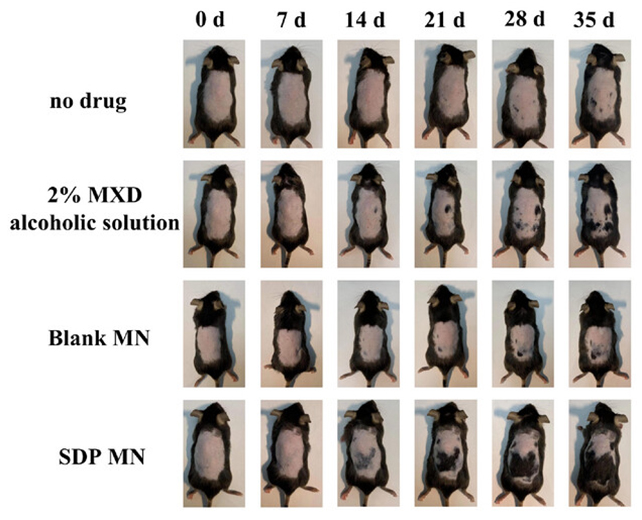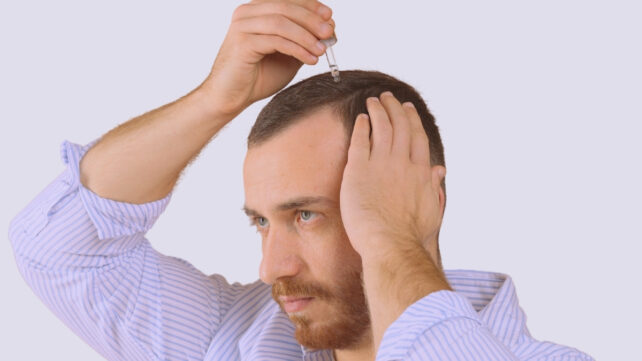A leading treatment for androgenetic alopecia (AGA) – the classic pattern hair loss – could be made more effective with the clever addition of the natural sweetener stevioside, derived from the stevia plant (Stevia rebaudiana).
Minoxidil is a popular treatment for AGA that is rubbed into the scalp: it works by revitalizing hair follicles with increased blood flow, but not much of it gets absorbed into the skin. Various forms of microneedle patches have been tested to improve penetration.
In a new study, researchers from China and Australia combined stevioside with microneedle patches, primarily because stevioside helps minoxidil dissolve much better in water. Using this method, much more minoxidil should get under the skin to the hair follicles.
Related: Decades of Studies Link Suicide Risk With Common Hair Loss Treatment
The approach was tested in mice that had been genetically engineered to lose hair, and the results were promising. Much more of the minoxidil made it into the skin, and more hair grew back.
"There is a significant increase in hair follicle transition to the growth phase, which resulted in 67.5 percent coverage of the treatment area by day 35," write the researchers in their paper.
"Collectively, the results highlight the potential of the stevioside microneedle delivery system for the treatment of AGA."

For mice treated with a standard minoxidil solution, hair grew back in just 25.7 percent of the coverage area by day 35, which is a significant improvement to minoxidil on its own. Hair growth started around a week earlier, too.
As promising as these results are, they're for mouse hair and not human hair. The researchers are still experimenting with the microneedle delivery system and the minoxidil mix to find the best method of delivery.
"The benefits and drawbacks of various technical methods, such as metal or soluble microneedles and sustained-release systems, should be evaluated in conjunction with specific clinical scenarios," write the researchers.
Further testing will be required in larger animal studies before human clinical trials can get underway, and only at that point can scientists assess how these microneedle patches might work on people – while any side effects or other complications can also be weighed up.
Long-term viability also needs to be assessed. Current minoxidil treatments need to be applied at least once a day, and while microneedle delivery might change that, it needs to be suitable for regular applications.

"Using stevioside to enhance minoxidil delivery represents a promising step toward more effective and natural treatments for hair loss, potentially benefiting millions worldwide," says pharmacologist Lifeng Kang, from the University of Sydney in Australia.
The research has been published in Advanced Healthcare Materials.
